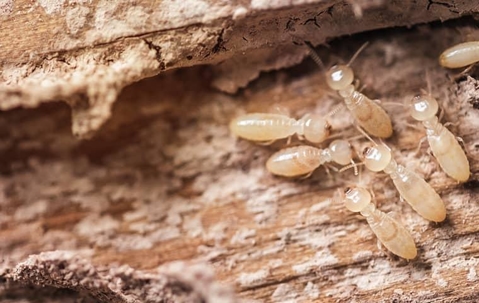With Fort Lauderdale and Miami to the south, the Everglades and Big Cypress preserves to the west, and the Atlantic to the east, we really do have it all here in Pompano Beach! The nightlife, the wildlife, and the salt life are all right here at our doorstep. Unfortunately, what’s also lurking just beyond our doorstep is a termite infestation. Here in South Florida, we all know our warm, wet weather is conducive to thriving bug populations, and termites are no exception. Termite swarming season is long down here – from April to July – and during this time, billions of these destructive, dangerous insects mate and head out to form millions of colonies all over the area.
South Florida Swarming Season
Termites are actually active all year round here in Florida. Swarming season is simply when we see the highest number of subterranean termite swarms. Swarms are formed of thousands of termite “swarmers” – the reproductive males and females that come together to pair off before seeking an ideal spot to found their own colonies. These swarmers are less than a half-inch long and brown to black with long white wings. When you spot these guys, it’s a sure sign of a problem because it means you may have an established colony on your property that’s mature enough to start creating satellite nests.
Once they’ve formed a mating pair, the termite queen and king will begin looking for the best spot to build a civilization around themselves. Unlike other termites, these flying swarmers don’t need moisture to survive. So the best thing you can do to prevent them from making a permanent home on your property is to make it hostile to their potential offspring.
Reduce Your Property’s Termite Curb Appeal
Termites need two main things to establish a nest: moisture and food. If you control these two resources, you will up your chances of sending the swarmers somewhere else. Use these two tips:
Moisture Control Tips- Subterranean termites need wet soil with low drainage and lots of shade to thrive. To eliminate these conditions:
Loosen soil with an aerator or tiller to allow better drainage.
Consider adding gravel, sand, or other materials to make it harder for soil to compact.
Trim trees and bushes to reduce shade and allow quicker evaporation.
Fix moisture issues like plumbing leaks and clogged drains/gutters.
Food Control Tips: Termites eat cellulose, and they’re especially attracted to cellulose that’s easy to access. This includes decaying trees, wet firewood, untreated building materials, and even mulch. Termites will target soil near these food sources for convenient access that allows them to stay underground while they eat.
To eliminate food sources:
Remove all rotting or water-damaged wood from your property. This includes both dead trees/bushes and decaying wooden materials that make up your home.
Keep mulch at least a foot away from the foundation and siding of your house.
Consider using pine needles or other landscaping materials in place of mulch.
Stain decks, rails, support beams, etc. to make them resistant to moisture.
What To Do If You Already Have A Problem
Swarms on your property often mean there’s already at least one established nest. If you see swarmers, it may mean you’ve got bigger problems – never fear, Pest Aside is here! Both our residential and commercial programs include inspection, treatment, and follow-up for year-round, comprehensive termite control. Our 25 years’ experience in the pest control industry and our certified techs give you the peace of mind that your property is safe from these destructive pests. Give us a call at (561) 462-8735 or visit our contact page to schedule your appointment with Pest Aside today.

